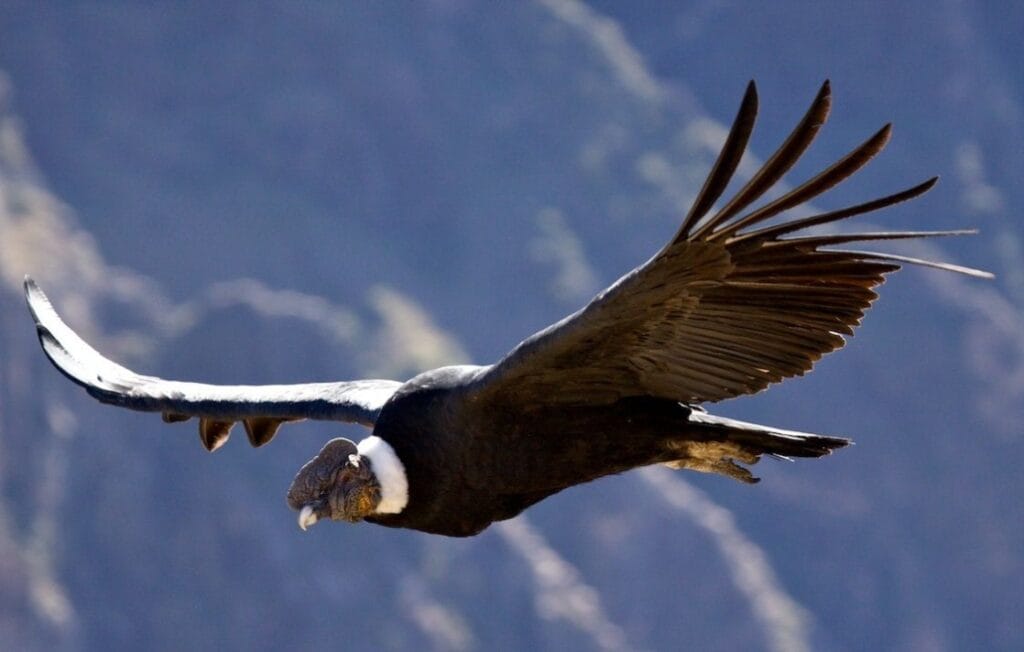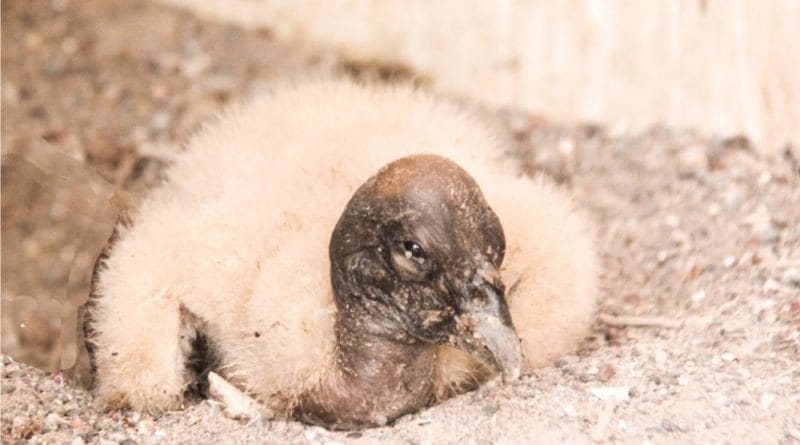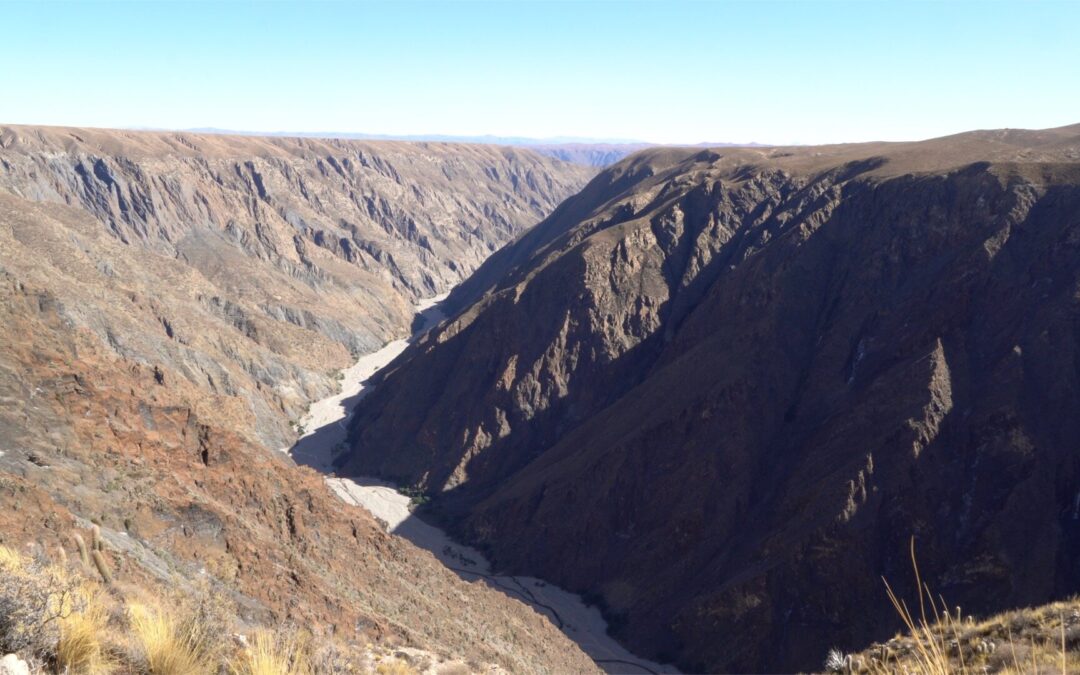Amanece en Peña Rajada y un cóndor surca el horizonte, el sol asciende por detrás de las montañas envuelto en un manto de explosiones cobrizas. Al fondo, un cielo azul se extiende, en tanto el cóndor despliega sus alas y planea a ras del suelo mostrando su fuerza, identidad y grandeza.
Es entonces cuando el simbolismo patrio toma sentido. Silencioso, poderoso y sin límites, levanta a Bolivia en sus alas. “Somos libres cual libre es el cóndor que el espacio recorre veloz” dice una de las estrofas del himno a Tarija y es cuando nos resulta increíble que esta ave cargada de patria se encuentre en la lista de animales en peligro de extinción.

El cóndor andino (Vultur gryphus) es una de las aves más majestuosas y longevas del mundo, sin embargo, tiene una baja tasa reproductiva. Pone solo un huevo cada dos a tres años, y alcanza su madurez sexual recién a sus ocho años, compartiéndola con una sola pareja de por vida. Estos factores sumados a otros relacionados con el hombre han puesto en riesgo a esta especie.
En Bolivia hay sólo 1.400 individuos. El pasado año la muerte de 35 cóndores en Laderas Norte puso al descubierto la precariedad en la cual se debate la existencia de los últimos ejemplares. Para los expertos en el tema, la muerte de este número de aves significó la merma del 2% de su población.
En este marco, Protección del Medio Ambiente Tarija (Prometa) con el impulso de Piensa Verde ha planteado un proyecto importante, precisamente para constituir un Santuario que permita la reproducción y conservación del Cóndor Andino en el cañón de Peña Rajada.
La zona se encuentra ubicada en el municipio de Yunchará del departamento de Tarija, a una altura de 3.570 metros sobre el nivel del mar; tiene una longitud de 25 kilómetros y presenta profundidades que alcanzan los 900 metros.
Se trata de una imponente formación geológica, de singular belleza paisajística, por lo que representa un sitio clave para constituir el Santuario. De acuerdo al director ejecutivo de Prometa Rodrigo Ayala “alcanzar este sueño permitirá la reproducción y conservación del Cóndor Andino, pero también posibilitará la preservación de otras especies como pumas y vicuñas”.
Sumado a ello en la zona también hay presencia de yacimientos fosilíferos que junto a la flora nativa constituyen un potencial turístico importante para las familias de las comunidades aledañas.
Según detalla Ayala el proceso de creación del área protegida tendrá un enfoque altamente participativo de las comunidades locales y autoridades del Gobierno Municipal de Yunchará.
Los resultados previstos del proyecto se concentran en la creación del Santuario de vida silvestre, que será establecido mediante ley autonómica municipal con el consentimiento de la población local.
De manera paralela se trabajarán directrices jurídicas para orientar la gestión y manejo del Santuario. Finalmente, una Red de monitoreo de fauna silvestre alto andina vinculará a las áreas protegidas subnacionales con el Servicio Nacional de Áreas Protegidas (SERNAP) a través de la Plataforma de la Reserva de Sama.

Tarija alza vuelo
Piensa Verde es una plataforma multisectorial que busca articular y canalizar apoyo económico en favor de la conservación de bosques, especies y áreas protegidas de Bolivia. En este marco invitó a organizaciones con amplia experiencia y trayectoria en el país a postular sus proyectos a la Convocatoria de Fondos Concursables.
El proyecto de Tarija, creado por Prometa, salió finalista y ahora debe afrontar una fase de votación del público. “Tarija alza vuelo” es el lema que enarbola la noble campaña y que apenas nació ha sumado bastante apoyo a nivel local y nacional.

Una mirada a la montaña
Ahí en la inaccesible altitud, se abre una grieta entre las rocas. Un pedacito de vida resumido en un plumón gris blanquecino se yergue débil mientras sus padres le dan de comer alimento fácil de digerir, ablandado y entibiado en el buche.
Permanecerá más de un año en el nido y tardará dos años en alcanzar su maduración total, entretanto su madre lo custodiará celosamente mientras su vida no sea interrumpida. Si esto sucediera el pequeño morirá de hambre.
Tras la muerte de los 35 cóndores en Tarija, es altamente probable que hayan fallecido de hambre e inanición algunos pichones…Allí en lo más alto, donde la palabra soledad realmente es soledad, a 5 mil metros de altura, y en espera de sus padres que jamás regresaron.
Es duro imaginar el dolor y la confusión que experimentan estas aves cuando son perseguidas, intoxicadas, baleadas y capturadas por seres humanos. Es hora de preguntarnos ¿Hasta cuándo?
Muy pronto podrás apoyar este noble proyecto ingresando a piensaverdebolivia.org y votando por el “Santuario de cóndores de Peña Rajada”. Ayúdanos a conservar esta importante ave
Prometa, más de 30 años de servicio
Prometa tiene una larga trayectoria de trabajo en el municipio de Yunchará, ha desarrollado un fuerte trabajo de protección de especies vulnerables como el Oso Jucumari y el Guanaco Andino, y a la vez que apoya la gestión de la Reserva Biológica de la Cordillera de Sama, ha apoyado la creación de áreas protegidas municipales en los municipios de Villazón (58480 ha), Tupiza (36362 ha) y Cotagaita (8052 ha) en el altiplano sur.
Apuntes sobre la temática
Amenaza
Debido a su baja tasa de reproducción, el cóndor es una especie extremadamente vulnerable a la actividad humana, sobre todo porque algunos agricultores lo consideran una amenaza. A menudo son asesinados con plaguicidas, cuya comercialización está prohibida.
Biocidio
La muerte de 35 cóndores en Laderas Norte fue calificada como “biocidio” y aunque el delito está tipificado en la Ley 700 de defensa de los animales, hasta ahora no se han identificado a los culpables.
Impacto
El biocidio de los cóndores en Tarija es el más grande sucedido en Bolivia y el segundo en el mundo. Otra matanza similar fue registrada en el año 2018 en Mendoza Argentina.
Reportaje escrito por: Danitza Pamela Montaño T

